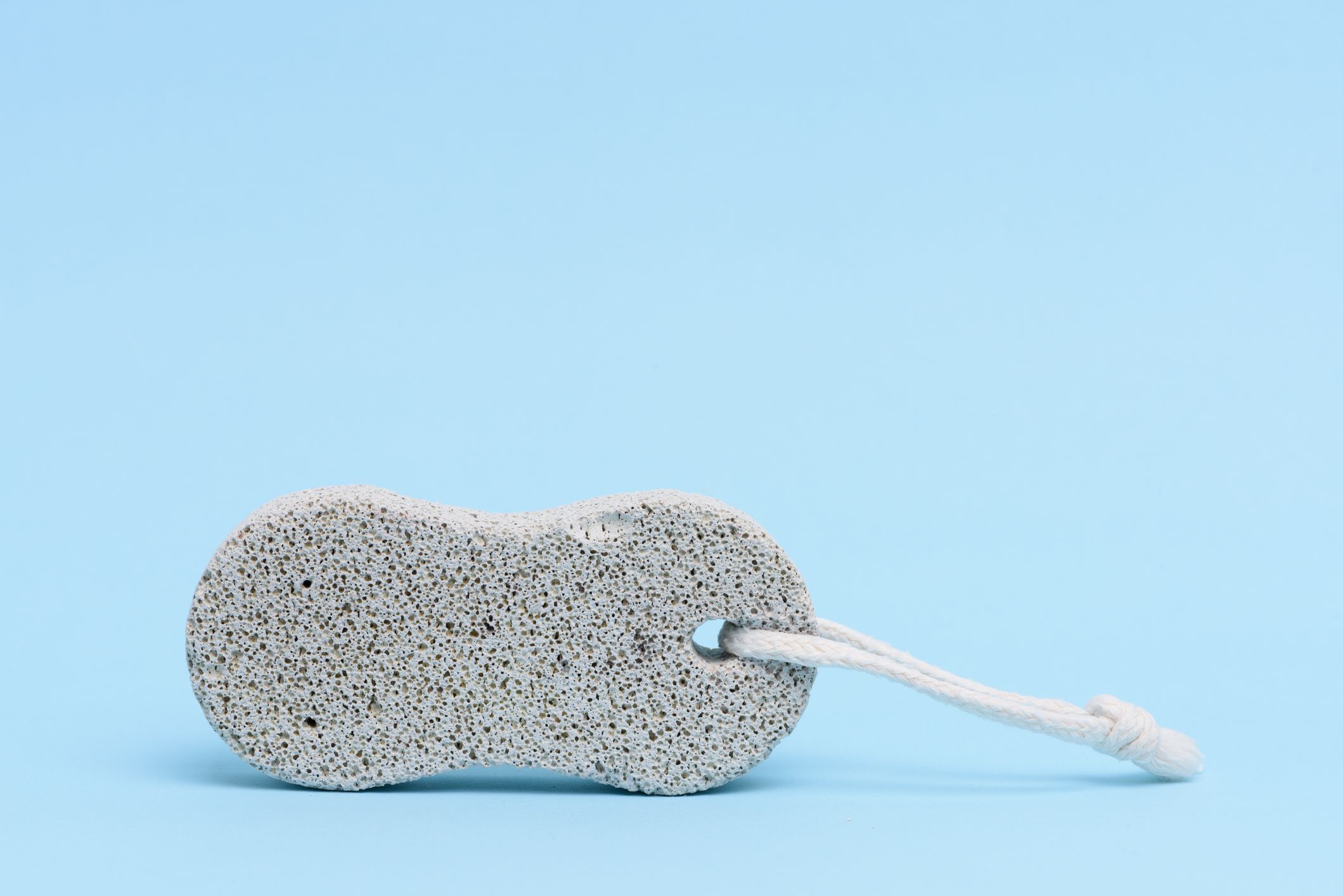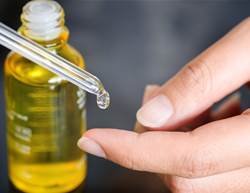It’s almost impossible for our skin to naturally glow 365 days a year. Every once in a while, we must take matters into our own hands, and the perfect tool for that is an oldie but goodie: the pumice stone.
According to dermatologists, the natural exfoliating product, which can be purchased for under $15 and dates back as far as 100 BC, is easy to use and will turn your feet from dry and callused to silky and smooth.
The pumice stone not only easily removes that excessive dead and flaky skin that you dread, but is gentle enough to use daily if you’re careful enough, says dermatologist Caroline A. Chang.
What is a pumice stone, exactly?
Formed by a combination of water and lava, the pumice stone is a natural product most known for removing rough patches on feet, elbows, and hands, allowing for softer skin to emerge. “When the lava/water [combination] cools down, it hardens and results in a light rock with a porous texture,” says dermatologist Ana Cristina Laureano. The stone’s texture offers mild to medium exfoliation.
You can find pumice stones in various sizes and shapes, sometimes attached to handles, which makes it even easier to use. This is especially true when it comes to the feet, which can be prone to dryness, flakiness, and calluses from excessive wear and tear, says dermatologist Tanya Kormeili.
Both Dr Chang and Dr Laureano recommend the pumice stone to their patients. “The benefits of using a pumice stone [are] that you can gently but effectively slough off dead skin and callused skin to reveal softer skin,” Dr Chang says. But though it’s generally safe, it’s important to know when and how to use it properly, since any exfoliation product has the potential to damage skin.
Are there any negative side effects of using a pumice stone?
Overall, dermatologists warn against being too aggressive when using a pumice stone, especially on certain parts of the body.
“It is best to use a pumice stone in areas with thicker skin like the knees, elbows, and feet,” Dr Laureano says. “The feet are the safest area to stick to if you have very sensitive skin on your body. I would avoid using it on thinner skin, like the face, as this skin is more susceptible to micro-abrasions and tears. Too much irritation on a thin-skin area can lead to inflammation, which can result in scarring and/or pigmentation changes.”
She also advises against using the pumice stone if you have diabetes, low blood circulation, or take blood thinners. “These patients are at increased risk for bleeding and foot infections,” she says, adding added that patients with nerve damage or infections should not use the pumice stone unless cleared explicitly by their physician.
In other words, when misused, the pumice stone can easily cause bleeding, tears, and scabs. So it is crucial that you first determine if you need to be cleared by a doctor before use. If you get the OK, remember to be gentle, take your time, avoid using on broken skin, and limit use to once per day. It is also never a good idea to share your pumice stone with another person, as bacteria can remain in the stone and be transferred to from person-to-person.
How to use a pumice stone the right way
Almost everyone experiences natural changes to their skin throughout the year. The cold, dry air in the winter months tends to make the skin nearly ten times drier; in the summer, our feet are exposed to the elements, which makes them more vulnerable. To gently exfoliate, grab a pumice stone and follow these four steps:
✔️ Step 1
Before you begin, you need to soak both your skin and the stone (separately) in warm water for five to ten minutes. Dr Laureano says that this will make the process easier by loosening up the dead-callused skin. It will also soften the stone’s texture, which will make it feel less rough.
✔️ Step 2
Once the skin and stone have both soaked in warm water, you can then begin exfoliating by gently rubbing the stone on the area in a circular motion. While performing this step for two to three minutes, you will most likely see dead skin falling off. From time to time, you should stop and rinse off the area and the stone in order to keep track of how much skin you’re exfoliating.
✔️ Step 3
After exfoliating for a few minutes, check the softness of your skin with your hand. If it still feels dry or hard, continue using the stone in a circular motion on the area for an additional one or two minutes. Once your skin feels smooth, you’re done! Do not continue using the pumice stone in one sitting after you’ve reached this point, as it is possible to overdo it, which can cause skin irritation or even bleeding and scarring.
✔️ Step 4
When you’re done using the pumice stone, you should finish off by rinsing the rock and the treated area in warm water. “Pumice stones are very porous and, after using, can accumulate your dead skin cells in [its] pores. Thus, it is important to wash and rinse your stone after you use it,” Dr Laureano explains.
Then, apply your favourite body lotion or foot cream to lock in the smoothness longer. It’s also generally safe to repeat the whole process daily if you feel that your skin needs it.
Bottom line: The pumice stone is a dermatologist-approved tool to exfoliate dry and callused skin.
It is not only affordable, but it is also reusable and can give you smoother skin when appropriately used. “The abrasive nature of the pumice stone has withstood the test of time,” Dr Laureano says. “It is a natural exfoliant that, if used correctly, can be very beneficial.”








.png&h=193&w=250&c=1&s=1)


